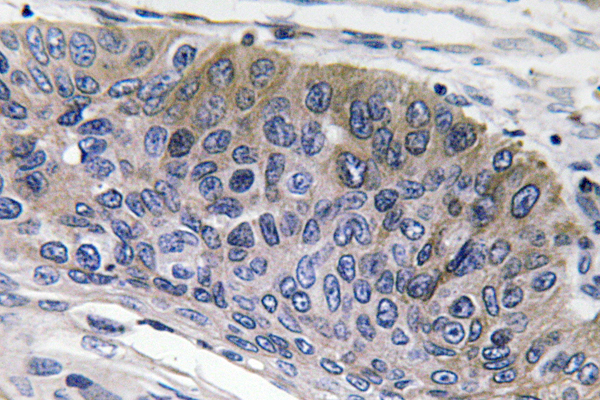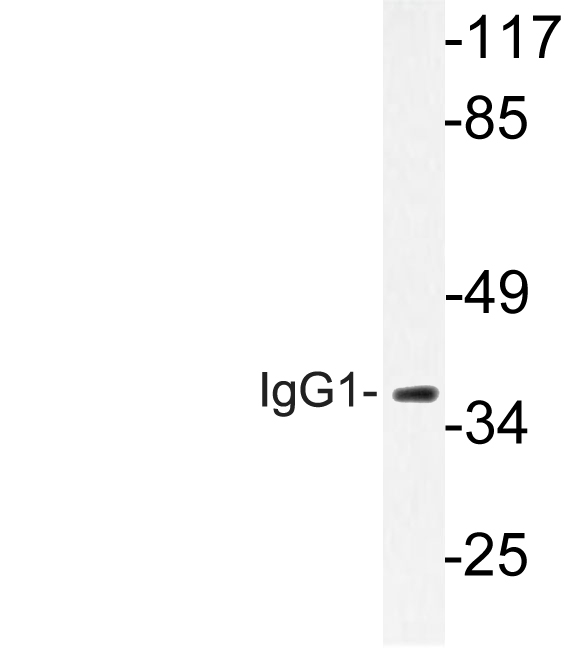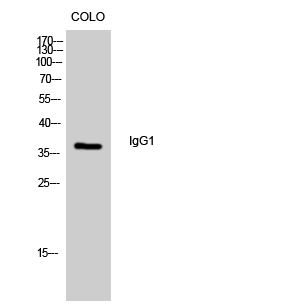产品名称
IgG1 Rabbit Polyclonal Antibody
别名
IGHG1; Ig gamma-1 chain C region
蛋白名称
Ig gamma-1 chain C region
存储缓冲液
Liquid in PBS containing 50% glycerol, 0.5% BSA and 0.02% New type preservative N.
Human Gene Link
http://www.ncbi.nlm.nih.gov/sites/entrez?db=gene&term=3500
Human Swissprot No.
P01857
Human Swissprot Link
http://www.uniprot.org/uniprotkb/P01857/entry
Mouse Swissprot No.
P01868
Mouse Swissprot Link
http://www.uniprot.org/uniprot/P01868
免疫原
The antiserum was produced against synthesized peptide derived from human IgG1. AA range:196-245
特异性
IgG1 Polyclonal Antibody detects endogenous levels of IgG1 protein.
稀释度
WB 1:500 - 1:2000. IHC 1:100 - 1:300. ELISA: 1:40000.. IF 1:50-200
宿主
Polyclonal, Rabbit,IgG
背景介绍
disease:Chromosomal aberrations involving IGHG1 may be a cause of multiple myeloma [MIM:254500]. Translocation t(11;14)(q13;q32) with CCND1; translocation t(4;14)(p16.3;q32.3) with FGFR3; translocation t(6;14)(p25;q32) with IRF4.,miscellaneous:Disease protein OMM may represent an allelic form or another gamma chain subclass.,miscellaneous:Disease protein WIS is lacking most of the V region and all of the CH1 region.,miscellaneous:Disease protein ZUC lack most of the V region, all of the CH1 region, and part of the hinge compared with normal gamma-3 heavy chains.,miscellaneous:EU also differs in the amidation states of residues 155, 166, 177, 195, 198, 269, and 272 and in the order of residues 268-272.,miscellaneous:KOL also differs in the amidation states of residues 198, 267 and 272.,miscellaneous:Nie also differs in the amidation states of 35, 116, 198, 269 and 272.,miscellaneous:Nie has the G1M(17) allotypic marker, 97-K, and the G1M(1) markers, 239-D and 241-L. KOL and EU sequences have the G1M(3) marker and the G1M (non-1) markers.,miscellaneous:The hinge region in gamma-3 chains is about four times as long as in other gamma chains and contains three identical 15-residue segments preceded by a similar 17-residue segment (12-28).,online information:IGHM mutation db,polymorphism:All 4 combinations of the S/G and V/G polymorphisms at positions 191 and 216 have been observed in human mu chains.,subcellular location:During differentiation, B-lymphocytes switch from expression of membrane-bound IgM to secretion of IgM.,subunit:Dimer linked by 12 disulfide bonds; it has an extra interchain disulfide bond at position 7 in addition to the 11 normally present in the hinge region.,
组织表达
Dermoid tumor,Esophagus tumor,Glandular pool- thyro
细胞定位
Secreted . Cell membrane .
功能
disease:Chromosomal aberrations involving IGHG1 may be a cause of multiple myeloma [MIM:254500]. Translocation t(11;14)(q13;q32) with CCND1; translocation t(4;14)(p16.3;q32.3) with FGFR3; translocation t(6;14)(p25;q32) with IRF4.,miscellaneous:Disease protein OMM may represent an allelic form or another gamma chain subclass.,miscellaneous:Disease protein WIS is lacking most of the V region and all of the CH1 region.,miscellaneous:Disease protein ZUC lack most of the V region, all of the CH1 region, and part of the hinge compared with normal gamma-3 heavy chains.,miscellaneous:EU also differs in the amidation states of residues 155, 166, 177, 195, 198, 269, and 272 and in the order of residues 268-272.,miscellaneous:KOL also differs in the amidation states of residues 198, 267 and 272.,miscellaneous:Nie also differs in the amidation states of 35, 116, 198, 269 and 272.,miscellaneous:Nie has the G1M(17) allotypic marker, 97-K, and the G1M(1) markers, 239-D and 241-L. KOL and EU sequences have the G1M(3) marker and the G1M (non-1) markers.,miscellaneous:The hinge region in gamma-3 chains is about four times as long as in other gamma chains and contains three identical 15-residue segments preceded by a similar 17-residue segment (12-28).,online information:IGHM mutation db,polymorphism:All 4 combinations of the S/G and V/G polymorphisms at positions 191 and 216 have been observed in human mu chains.,subcellular location:During differentiation, B-lymphocytes switch from expression of membrane-bound IgM to secretion of IgM.,subunit:Dimer linked by 12 disulfide bonds; it has an extra interchain disulfide bond at position 7 in addition to the 11 normally present in the hinge region.,
纯化
The antibody was affinity-purified from rabbit antiserum by affinity-chromatography using epitope-specific immunogen.



